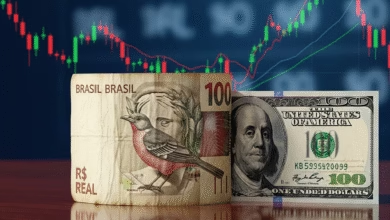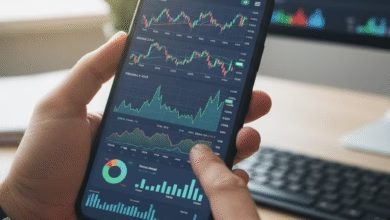How Brokers Earn from Your Uninvested Cash
Understand how brokers make money from money sitting in your account
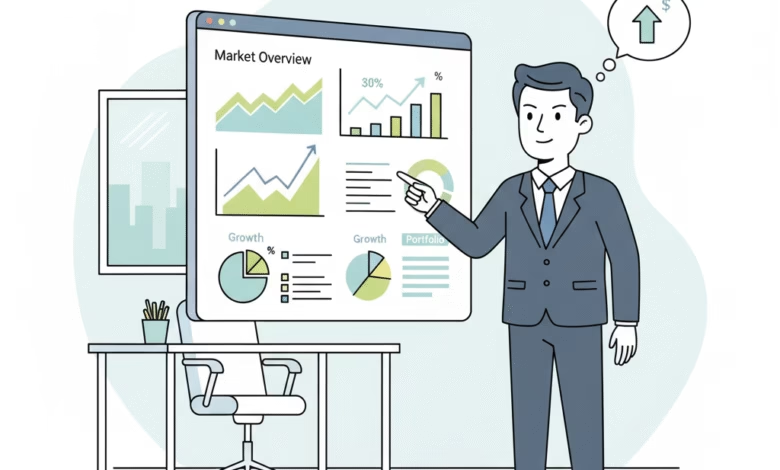
The age of zero-commission trading has been a revolution for the retail investor. Platforms like Schwab, Fidelity, E*TRADE, and Robinhood have made buying and selling stocks, ETFs, and options completely free. But this raises a logical question: if they aren’t charging you to trade, how are these multi-billion dollar companies staying in business?t
Many people point to “Payment for Order Flow” (PFOF)—the practice of selling your trade orders to high-frequency traders. While that’s certainly part of the puzzle, it’s often not even the biggest piece.
One of the most significant, consistent, and misunderstood revenue streams for modern brokers is sitting right in your account: your uninvested cash.
That $5,000 you’re waiting to deploy on a market dip? The $20,000 you just deposited? The dividends that haven’t been reinvested yet? Your broker is quietly putting that money to work—for them, not for you.
This article pulls back the curtain on the “cash sweep” industry. We’ll explore exactly how brokers monetize your cash, how much it’s costing you, and the simple steps you can take to start earning that profit for yourself.
What Is a Brokerage “Cash Sweep” Program?

When you deposit money into your brokerage account, it doesn’t just sit in a digital vault with your name on it. By default, nearly every major broker “sweeps” this cash out of your account at the end of each business day and deposits it into one or more partner banks.
This is your “core position” or “cash sweep vehicle.” It’s the automatic, default parking spot for any dollar that isn’t actively invested in a stock, bond, or fund.
From the broker’s perspective, this serves two purposes.
- The Public Benefit: It provides you, the customer, with a huge benefit: FDIC insurance. The FDIC (Federal Deposit Insurance Corporation) is a government agency that protects bank deposits. By sweeping your cash into these partner banks, brokers can offer you $250,000 in FDIC protection per bank. Many large brokers partner with dozens of banks, allowing them to offer millions of dollars in FDIC coverage on your cash—far more than the $250,000 in cash protection offered by SIPC (Securities Investor Protection Corporation) in the event of a broker’s failure.
- The Hidden Profit: This mechanism is also a massive, built-in profit engine.
This entire process is disclosed in the fine print of your account agreement, but few investors ever read it. They simply see a cash balance in their account and assume it’s sitting there, waiting for their next command. The truth is, that money is already on a journey.
The Multi-Billion Dollar Secret: Understanding Net Interest Margin (NIM)
To understand how your broker profits, you only need to know one term: Net Interest Margin (NIM).
This might sound like complex bank jargon, but the concept is incredibly simple. It’s the spread, or the difference between the interest your broker earns on your money and the interest it pays to you.
Here is a step-by-step example of how it works in a high-interest-rate environment:
- You Deposit: You have $10,000 of uninvested cash in your brokerage account.
- The “Sweep”: At the end of the day, your broker sweeps that $10,000 into a savings account at a partner bank (let’s call it “Bank A”). Because your broker is bringing Bank A billions of dollars in stable deposits, Bank A pays them a very high, negotiated interest rate. Let’s say the broker gets 5.0% APY on your money.
- Your “Cut”: The broker then passes a tiny fraction of that interest on to you. You log into your account and see your cash sweep APY is 0.10%.
- The Profit (NIM): The broker’s Net Interest Margin on your cash is the difference: 5.0% (what they earn) – 0.10% (what they pay) = 4.90%.
On your $10,000, your broker is earning $490 per year. You are earning $10.
Now, scale that up.
Major brokerage firms hold tens of billions of dollars in customer sweep deposits. Charles Schwab, for example, has historically held over $100 billion in these types of accounts. When you multiply a 4.90% spread across $100 billion, you are looking at $4.9 billion in annual, near-risk-free revenue for the company.
This, not $0 commissions, is the financial engine of the modern brokerage industry.
Why Is This “Default” Setting So Unfavorable to Investors?
Brokers are not charities. They are for-profit businesses that have brilliantly engineered their systems to maximize revenue. The low-yield bank sweep is the default for two powerful reasons:
1. FDIC Insurance Is a Powerful Marketing Tool
It’s much easier to sell a customer on “Your cash is 100% FDIC insured up to $2 million” than “Your cash is in a slightly riskier fund you’ve never heard of.” The peace of mind associated with the “FDIC” name is a powerful psychological anchor that makes customers feel safe, even while they are earning next to nothing.
2. They Rely on Customer Inertia
Brokers know that the vast majority of people will stick with the default option. It’s the path of least resistance. They make it possible for you to move your money into a higher-yielding option, but they don’t make it easy or obvious. They are betting that you’ll be too busy, too intimidated, or simply unaware that a better option even exists within their own platform.
In a high-interest rate environment, this inertia is fantastically expensive for you and fantastically profitable for them. When the Federal Reserve raises interest rates, brokers can immediately earn more on your cash from their partner banks, but they are very, very slow to raise the rate they pay to you, widening their profit margin with every Fed hike.
$0 Commissions vs. Low Interest: Understanding the Real Trade-Off

The rise of $0 commission trading wasn’t an act of generosity; it was a strategic business pivot. Companies like Robinhood forced the hands of the legacy brokers (Schwab, Fidelity, etc.), who then had to eliminate their trading fees to compete.
To make up for that lost revenue, they had to optimize their other income streams. The “spread” on customer cash became one of the most important.
You are making a trade, whether you realize it or not:
You “pay” for your free trades by accepting a near-zero interest rate on your cash.
This is just one part of their diversified business model, which also includes:
- Payment for Order Flow (PFOF): As mentioned, they sell your trade orders to high-frequency trading firms (market makers) who execute the trade and profit from the “bid-ask spread.”
- Margin Lending: If you borrow money from your broker to trade “on margin,” they charge you a high interest rate, often much higher than a personal loan.
- Securities Lending: Your broker lends out your fully-paid-for stocks (which you hold in your account) to short-sellers, who pay a fee. The broker keeps the vast majority of this fee.
- Advisory Fees: They charge management fees for their own robo-advisors or human-managed portfolios.
When you add it all up, you can see that “free trading” is just the marketing hook to get you in the door. The real business is what happens once you’re inside.
The High Cost of Doing Nothing: What Is “Cash Drag”?
This brings us to the financial concept of “cash drag.”
Cash drag is the opportunity cost of holding cash that is earning a return below the rate of inflation or below other safe, available alternatives. It’s the invisible force “dragging” down your portfolio’s total return.
Let’s run the numbers. Imagine you have $50,000 in “dry powder,” waiting for the right time to invest.
- Scenario 1: Default Sweep Account
- APY: 0.10%
- Annual Interest Earned: $50
- Scenario 2: A Readily Available Alternative (more on this below)
- APY: 5.0%
- Annual Interest Earned: $2,500
In this example, your cash drag—your cost of inertia—is $2,450 per year. You are essentially paying your broker $2,450 for the “privilege” of using their free trading platform.
Worse still, if inflation is running at 3%, your $50,000 is losing $1,500 in purchasing power. In Scenario 1, you’re experiencing a real (after-inflation) loss of $1,450. In Scenario 2, you are actually beating inflation by $1,000.
Your Best Alternative: How Money Market Funds (MMFs) Beat Sweep Accounts
So, what is this magical 5.0% alternative? It’s not a secret. In fact, it’s sitting right inside your brokerage account, just a few clicks away.
It’s called a Money Market Fund (MMF).
A Money Market Fund is a type of mutual fund that invests in high-quality, short-term debt. These are not stocks. They invest in things like:
- U.S. Treasury Bills (IOUs from the U.S. government)
- Certificates of Deposit (CDs) from major banks
- Commercial Paper (short-term IOUs from stable corporations)
Because their underlying investments are so safe and so short-term, MMFs are considered one of the safest investments available. Their primary goal is not high growth, but stability and liquidity. They seek to maintain a stable value of $1.00 per share while paying out a high-interest dividend (called a “7-day yield”).
Money Market Funds vs. Bank Sweeps: The Key Differences
| Feature | Bank Sweep Account (Default) | Money Market Fund (The Alternative) |
| Primary Goal | Broker Profit & FDIC “Marketing” | Stability, Liquidity, & High Yield |
| Typical Yield | Extremely Low (e.g., 0.01% – 0.50%) | High (Tied to Fed rates, e.g., 4.5% – 5.5%) |
| Insurance | FDIC Insured (up to $250k per bank) | SIPC Insured |
| How to Access | Automatic. It’s your default cash position. | You must manually buy it like a stock. |
But Are MMFs Truly Safe? (FDIC vs. SIPC)
This is the most important distinction. Your bank sweep is FDIC-insured against bank failure. A Money Market Fund is SIPC-insured.
SIPC protects you against the failure of your broker. It ensures that the shares of the MMF you own are returned to you. It does not protect you if the MMF itself “breaks the buck.”
“Breaking the buck” is an extremely rare event where the fund’s investments lose value, causing its share price to fall below $1.00. This effectively only happened once in a major way, during the 2008 financial crisis, and new SEC rules have since been implemented to make MMFs even more stable.
For most investors, a Government Money Market Fund (which invests 99.5%+ of its assets in government securities or cash) is considered to be just as safe as a bank deposit.
Are All Brokers the Same? Comparing Cash Policies
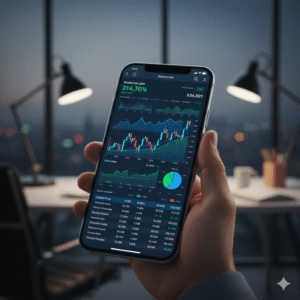
No. How brokers handle your cash is a major point of differentiation.
- The “Opt-In” Brokers (Most Common): Firms like Schwab and E*TRADE default you into their low-yield, high-profit bank sweep program. They offer competitive MMFs (like SWVXX or VMFXX), but they force you to manually find them and buy them. They are built on customer inertia.
- The “Opt-Out” Brokers (Consumer-Friendly): Fidelity is a standout in this category. By default, Fidelity sweeps your uninvested cash into one of their own high-yield Government Money Market Funds (like SPAXX). You automatically get a competitive rate without doing anything. You have to manually “opt-out” if you want the lower-yield, FDIC-insured option.
- The “Fintech” Model: Newer companies like Wealthfront and Betterment built their entire brands on this. They offer “High-Yield Cash Accounts” that are essentially bank sweep programs, but they pass almost all of the interest on to you, keeping only a very small spread (or charging a small flat fee) for themselves.
Step-by-Step Guide: How to Find and Move Your Cash for Higher Yields
Ready to stop giving your broker a free loan? Here is the general process. (Note: The exact menus or ticker symbols may vary by broker.)
Step 1: Audit Your Current “Core Position”
Log in to your brokerage account. Go to your “Positions” or “Summary” page. Look at your “Cash” balance and find the line item for it. It will have a name like “Bank Sweep Program” or “FDIC-Insured Deposit Account” and a listed APY. This is your baseline. (If it’s Fidelity, it may already be in SPAXX, and you’re all set!)
Step 2: Research Your Broker’s Money Market Funds
Go to the “Trade” or “Research” tab and look for “Mutual Funds” or “Money Market Funds.” You want to find a Government Money Market Fund. Common tickers include:
- Schwab: SWVXX
- Fidelity: SPAXX, FZFXX
- Vanguard: VMFXX, VUSXX
- E*TRADE: (Often uses Vanguard or other funds)
Look for the “7-Day Yield” or “Current Yield.” This is the interest rate you’ll be getting.
Step 3: “Buy” the Money Market Fund
This is the part most people miss. You have to place a trade.
Go to your trading ticket. Instead of typing in a stock ticker like ‘AAPL’, you type in the MMF ticker (e.g., ‘SWVXX’). If you have $50,000 in cash, you will “Buy” $50,000 worth of SWVXX. The price will be $1.00 per share, so you’ll get 50,000 shares.
Step 4: Understand Liquidity and Settlement
The cash is still in your account and is highly liquid. Most brokers will even “auto-liquidate” your MMF shares if you buy a stock and don’t have enough settled cash. This means if you have $0 cash but $50,000 in SPAXX, you can still buy $10,000 of Apple. The broker will automatically sell $10,000 of your SPAXX to cover the purchase.
Step 5: Watch the Interest Accrue
Unlike a bank account that pays interest monthly, MMFs accrue interest daily and typically pay it out as a dividend at the end of each month, which is then automatically reinvested into more shares.
Beyond Brokerages: What About High-Yield Savings Accounts (HYSAs)?
One other alternative for cash you don’t plan to invest soon is a High-Yield Savings Account (HYSA).
These are typically offered by online-only banks (like Ally, Marcus, or Discover). Because they don’t have the overhead of physical branches, they pass their savings on to you in the form of high APYs.
- Pro: They are 100% FDIC insured and offer a competitive rate, completely separate from your “risky” investment portfolio.
- Con: It’s not “dry powder.” To invest that money, you must initiate an ACH transfer from your HYSA to your broker, which can take 1-3 business days. You can’t “buy the dip” in an instant.
The best strategy:
- Use an HYSA for your 3-6 month emergency fund.
- Use a Money Market Fund inside your brokerage for your “dry powder”—cash you’re waiting to invest.
Take Control of Your Cash
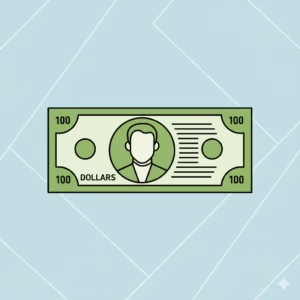
Your broker isn’t giving you free trades out of kindness. It’s a calculated business decision, and they are making back that money—and more—by leveraging your inertia.
The default bank sweep program is one of the worst places to park your cash in a high-interest-rate world. It’s a guaranteed way to lose purchasing power to inflation and pay your broker an invisible, multi-thousand-dollar fee for the privilege of being their customer.
By making one simple change—trading your default cash position for a money market fund—you move from the debit side of the ledger to the credit side. You stop being the source of your broker’s profit and start earning that profit for yourself.

